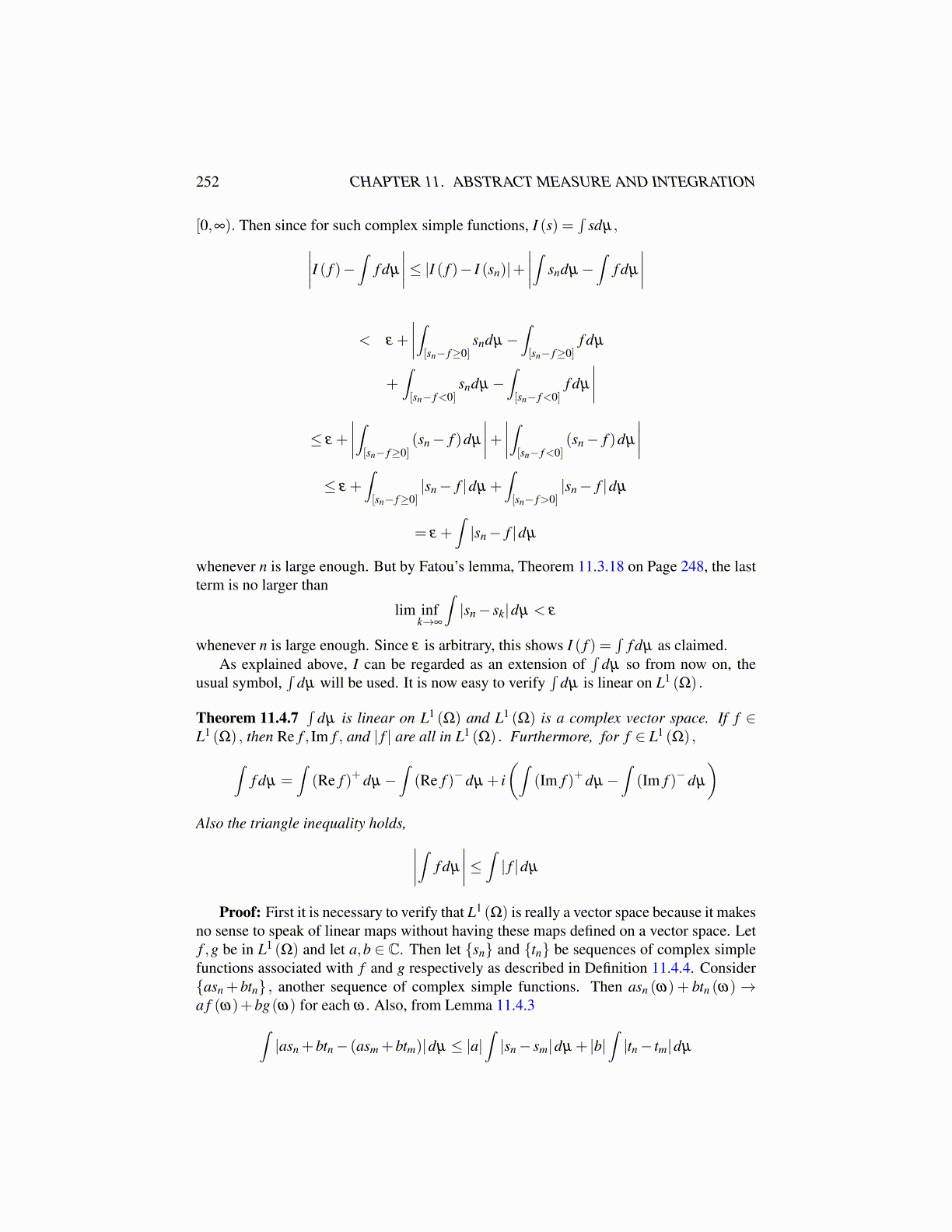
252 CHAPTER 11. ABSTRACT MEASURE AND INTEGRATION
[0,∞). Then since for such complex simple functions, I (s) =∫
sdµ,∣∣∣∣I ( f )−∫
f dµ
∣∣∣∣≤ |I ( f )− I (sn)|+∣∣∣∣∫ sndµ−
∫f dµ
∣∣∣∣< ε +
∣∣∣∣∫[sn− f≥0]
sndµ−∫[sn− f≥0]
f dµ
+∫[sn− f<0]
sndµ−∫[sn− f<0]
f dµ
∣∣∣∣≤ ε +
∣∣∣∣∫[sn− f≥0]
(sn− f )dµ
∣∣∣∣+ ∣∣∣∣∫[sn− f<0]
(sn− f )dµ
∣∣∣∣≤ ε +
∫[sn− f≥0]
|sn− f |dµ +∫[sn− f>0]
|sn− f |dµ
= ε +∫|sn− f |dµ
whenever n is large enough. But by Fatou’s lemma, Theorem 11.3.18 on Page 248, the lastterm is no larger than
lim infk→∞
∫|sn− sk|dµ < ε
whenever n is large enough. Since ε is arbitrary, this shows I ( f ) =∫
f dµ as claimed.As explained above, I can be regarded as an extension of
∫dµ so from now on, the
usual symbol,∫
dµ will be used. It is now easy to verify∫
dµ is linear on L1 (Ω) .
Theorem 11.4.7∫
dµ is linear on L1 (Ω) and L1 (Ω) is a complex vector space. If f ∈L1 (Ω) , then Re f , Im f , and | f | are all in L1 (Ω) . Furthermore, for f ∈ L1 (Ω) ,∫
f dµ =∫
(Re f )+ dµ−∫
(Re f )− dµ + i(∫
(Im f )+ dµ−∫
(Im f )− dµ
)Also the triangle inequality holds, ∣∣∣∣∫ f dµ
∣∣∣∣≤ ∫ | f |dµ
Proof: First it is necessary to verify that L1 (Ω) is really a vector space because it makesno sense to speak of linear maps without having these maps defined on a vector space. Letf ,g be in L1 (Ω) and let a,b ∈ C. Then let {sn} and {tn} be sequences of complex simplefunctions associated with f and g respectively as described in Definition 11.4.4. Consider{asn +btn} , another sequence of complex simple functions. Then asn (ω) + btn (ω)→a f (ω)+bg(ω) for each ω. Also, from Lemma 11.4.3∫
|asn +btn− (asm +btm)|dµ ≤ |a|∫|sn− sm|dµ + |b|
∫|tn− tm|dµ